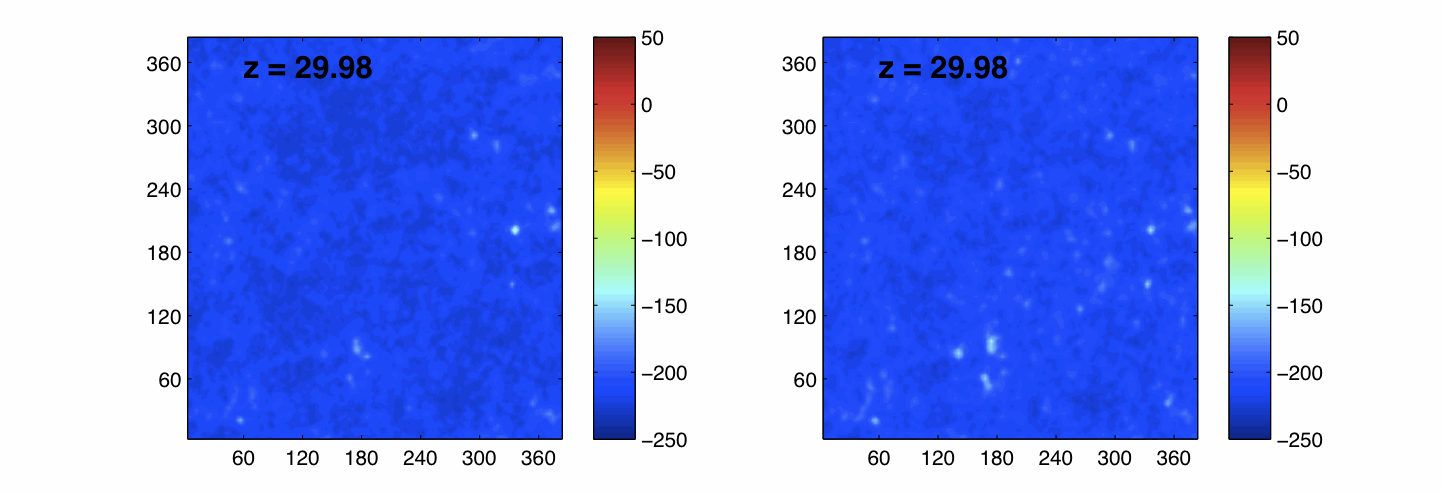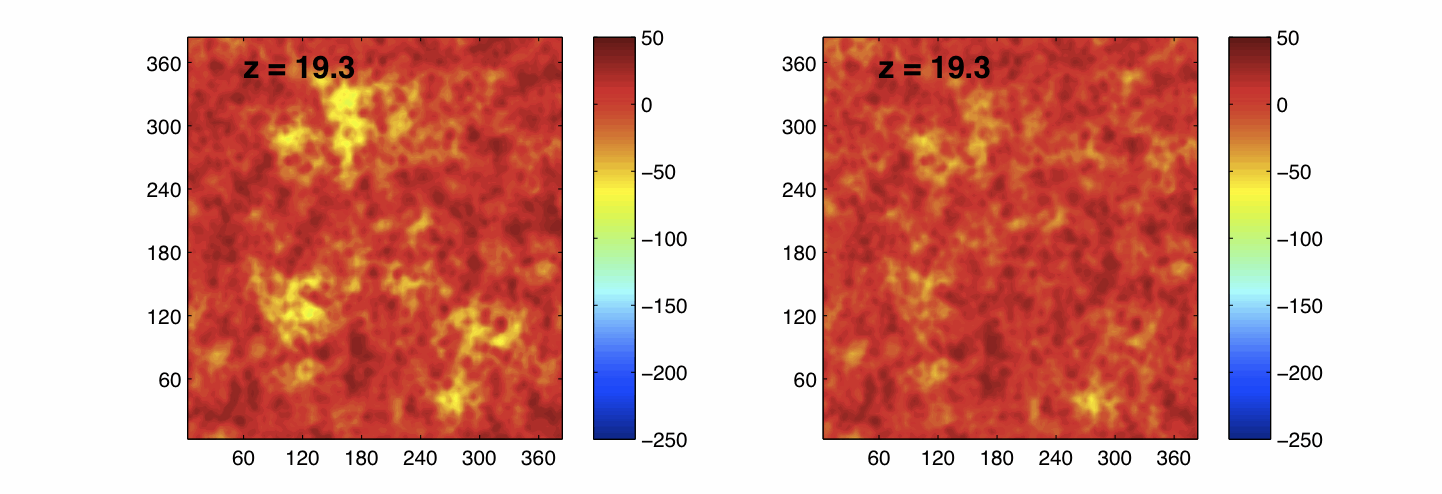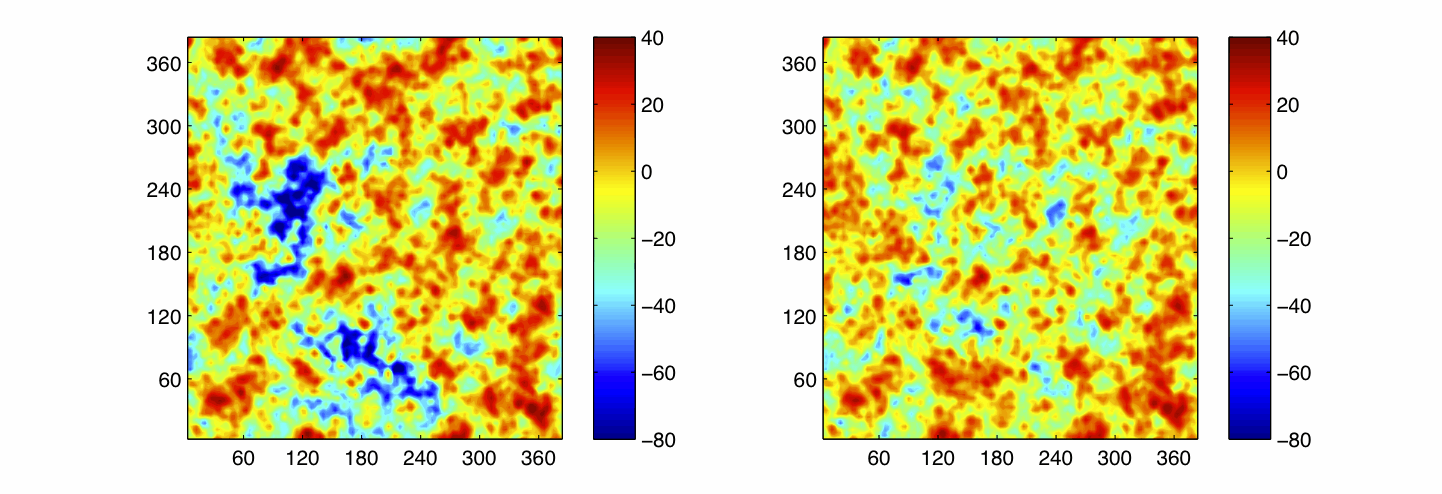The following movies use the same simulated volume as on the Image
page (i.e., a different box from the one used in the figures in
Nature, with a different set of random initial conditions). Each image
within each movie shows a slice that is 384 comoving Mpc on a side,
corresponding to 1.25 billion light years in today's Universe. The
thickness of the slice is 3 comoving Mpc (9.8 million light years). In
each movie, we compare the new prediction (including the effect of
both velocity and density) on the left to the previous (density-only)
expectation on the right. Both movies show the intensity of radio
waves from hydrogen atoms at a wavelength of 21 cm, as expressed in
equivalent temperature units (i.e., the brightness temperature,
measured here in units of millikelvin). Gas that is hotter than the
cosmic microwave background emits 21-cm radiation and has a positive
brightness temperature, while colder gas absorbs 21-cm radiation and
has a negative brightness temperature. The 21-cm intensity measures
the distribution of stars through its sensitivity mainly to the gas
temperature (though it is also proportional to the gas
density). Regions with a high density of stars have had a higher
intensity of X-rays, and thus are hotter and emit more intense 21-cm
radiation.
Please note: We provide the movies in two different formats. Some
formats may not display properly depending on your particular computer
hardware and software. It may work better to download the linked files
and open them outside the web browser.



